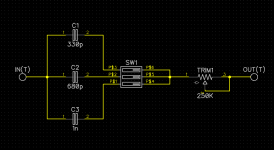iamjackslackof
Well-known member
Mythos makes one, which I just bought, but I think the community here/Robert could come up with something as good or better. Maybe an SMD version with a pick and place option for somewhere like JLPCB.
I really like that I can install one, have a ton of options, and still be able to just turn it off fully. No more alligator clip dance, and easy to change your mind on the fly.
I really like that I can install one, have a ton of options, and still be able to just turn it off fully. No more alligator clip dance, and easy to change your mind on the fly.








